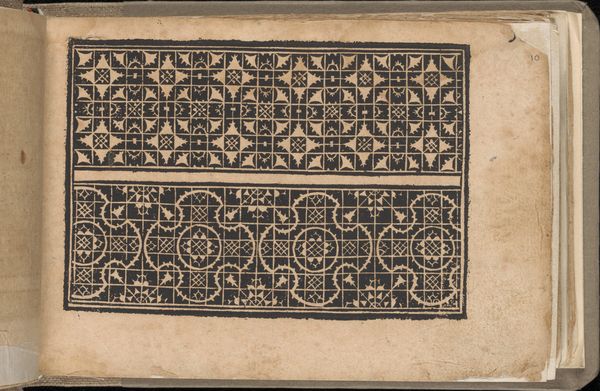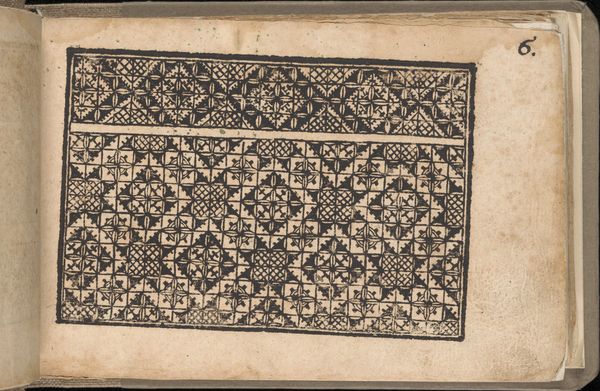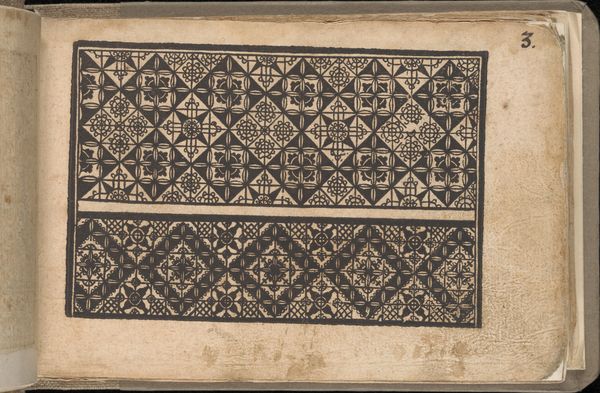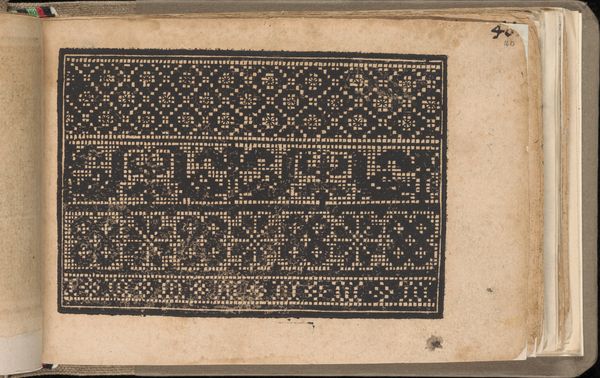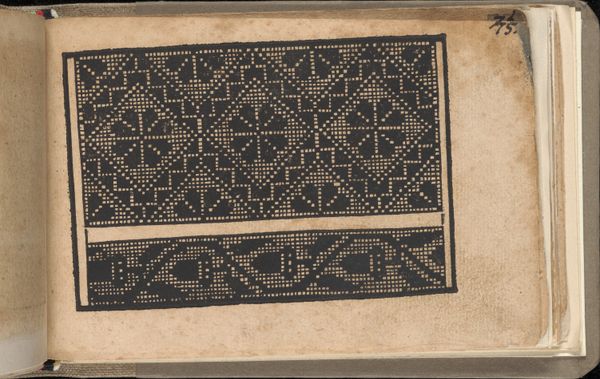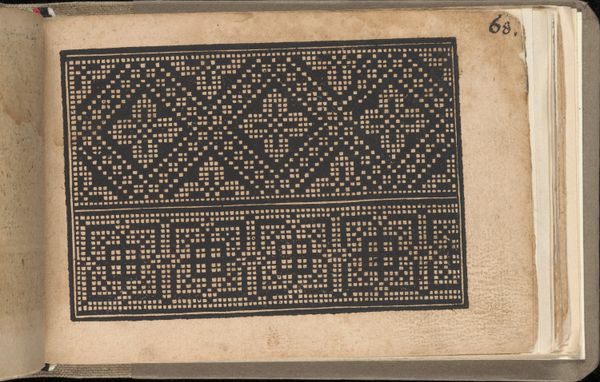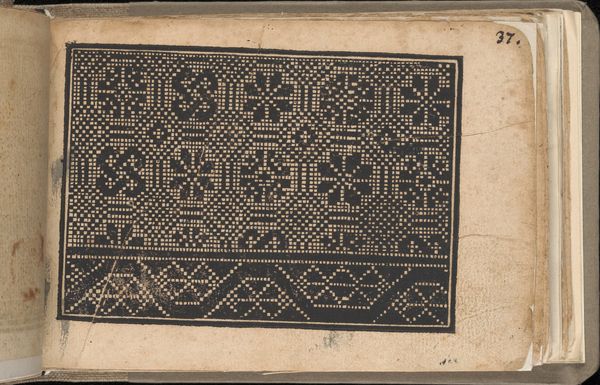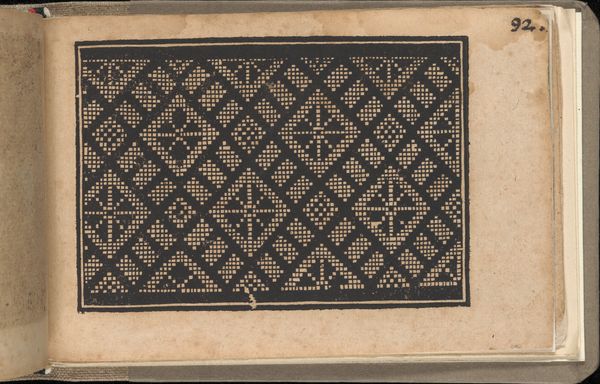
drawing, graphic-art, ornament, print, paper, ink
#
drawing
#
graphic-art
#
ornament
#
toned paper
#
muted colour palette
#
ink paper printed
# print
#
book
#
paper texture
#
paper
#
11_renaissance
#
ink
#
geometric
#
northern-renaissance
Dimensions: Overall: 4 1/2 x 6 11/16 in. (11.5 x 17 cm)
Copyright: Public Domain
Editor: Here we have a page from “Schön newes Modelbuch” by Sigismundus Latomus, printed in 1608. It looks like ink on paper, and the geometric pattern is quite intricate. What I find striking is how this could easily be seen as just an ornamental design, but I'm curious about how it reflects the labor and material aspects of its time. How do you interpret this work, especially considering the material context? Curator: Well, let's start with the "Modelbuch" itself. It's not high art in the traditional sense, but a pattern book. Consider the material reality: ink and paper, relatively accessible even in the early 17th century, allowing for mass production and distribution of designs. Who do you think was the target audience and how would this impact the artform itself? Editor: Probably artisans and craftspeople looking for patterns. Embroiderers, maybe lace makers? It speaks to a different level of society than, say, an oil painting commissioned by a noble family. The means of production and intended use seem central here. Curator: Precisely. It democratizes design, putting patterns into the hands of those who actually *make* things. We need to ask how this production impacts consumption. It becomes about applying existing forms rather than striving for artistic originality, correct? How does it reflect contemporary concerns of craft production and accessibility? Editor: So, the value isn't necessarily in the individual artistry of the design itself, but in its practical application and the ability for many to replicate it. I hadn't thought of it that way before; more focus on functionality than individual expression. Curator: It moves art into a social practice! "Art" isn't just something to be looked at in a gallery; it becomes a resource. Seeing the print as an instruction, something designed to be repeated by anonymous artisans across the region is crucial to understand. Editor: I never really considered this piece in terms of consumption. Now it prompts me to question the relationship between craftsmanship and industrial production from that time. Thank you! Curator: My pleasure! It encourages you to ask who gets to make and consume art – or even call something 'art' at all.
Comments
No comments
Be the first to comment and join the conversation on the ultimate creative platform.


